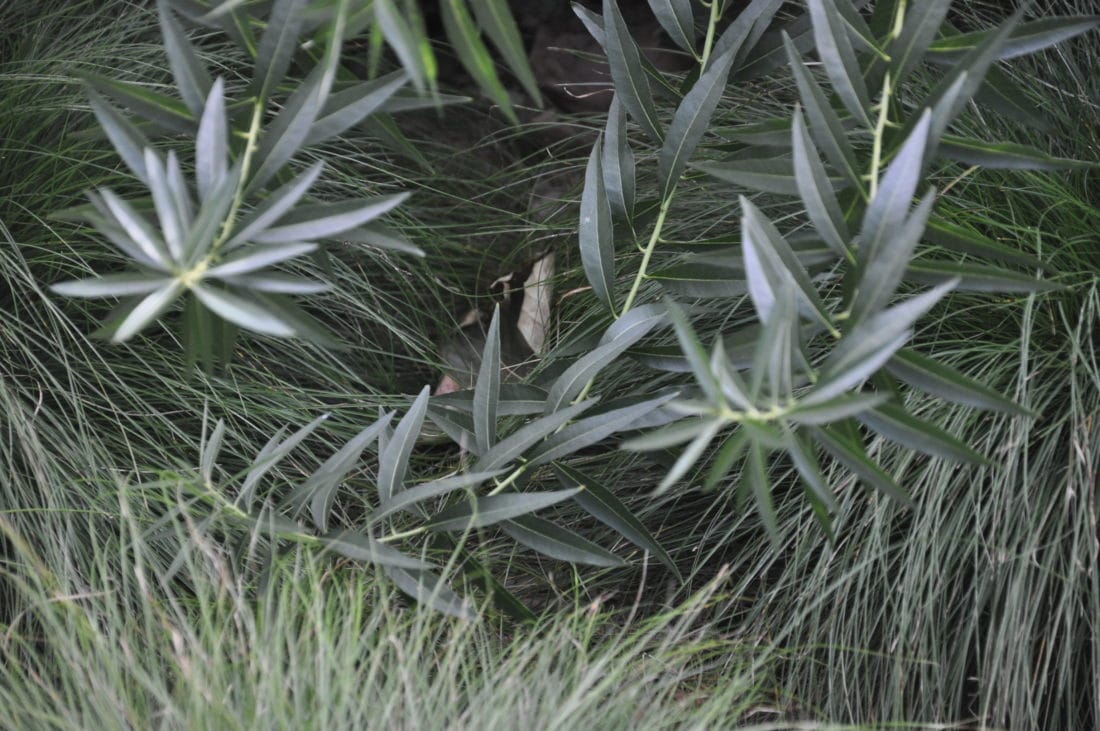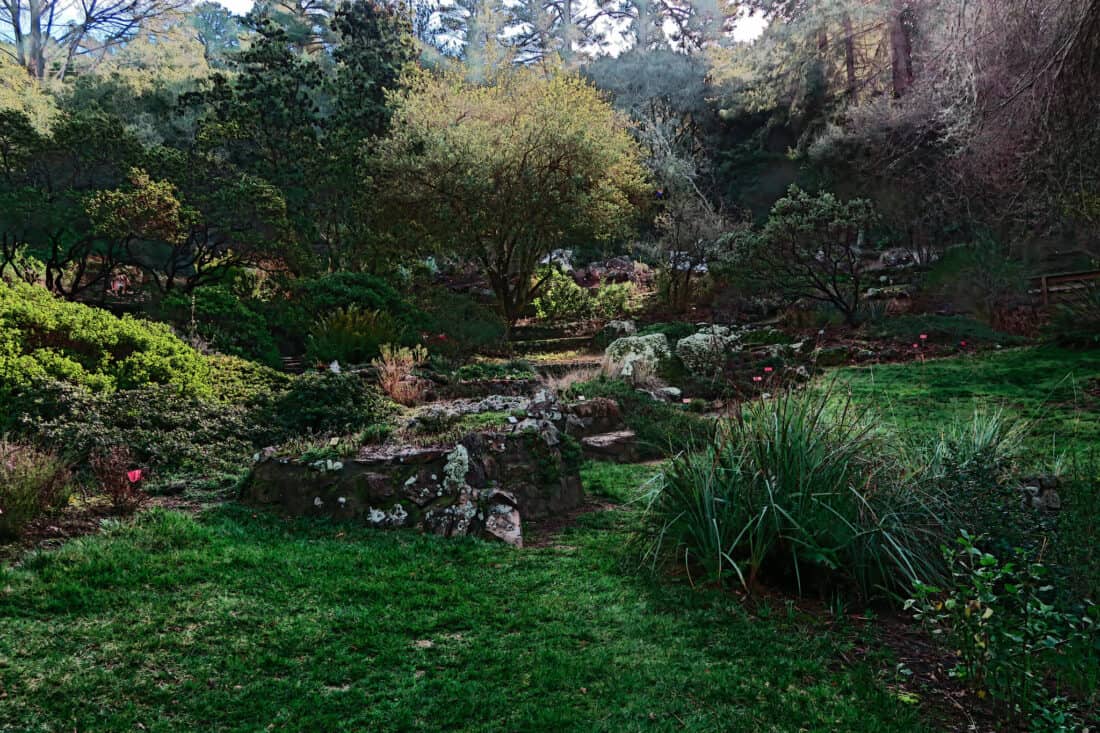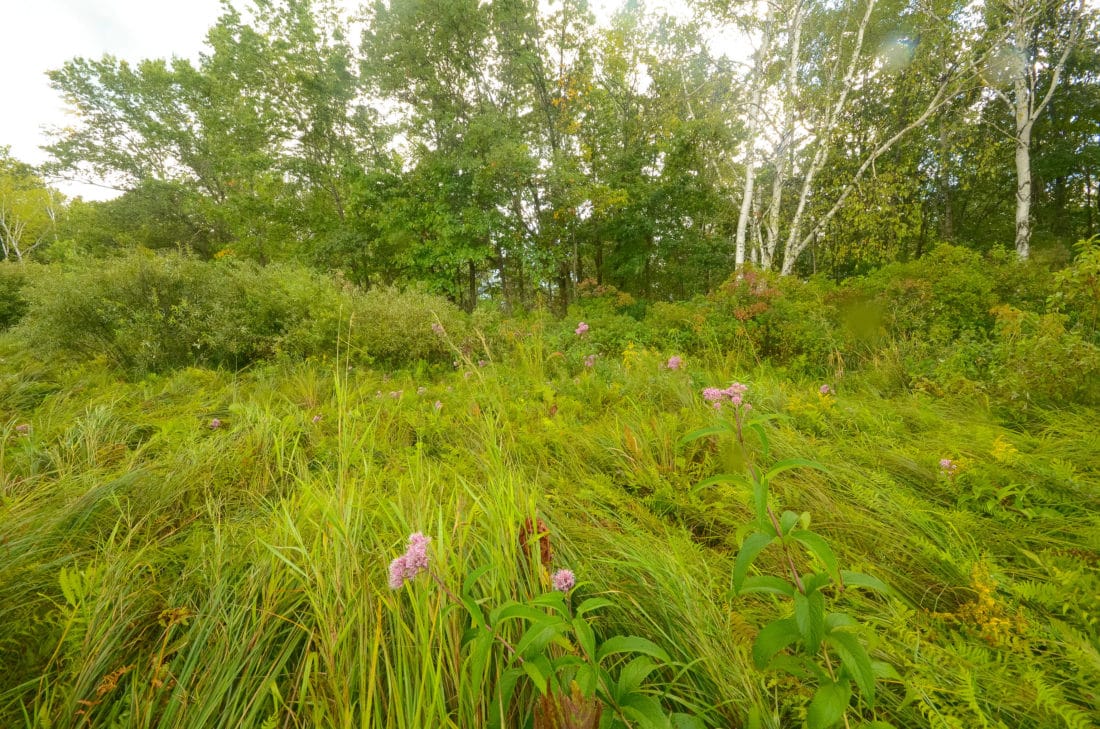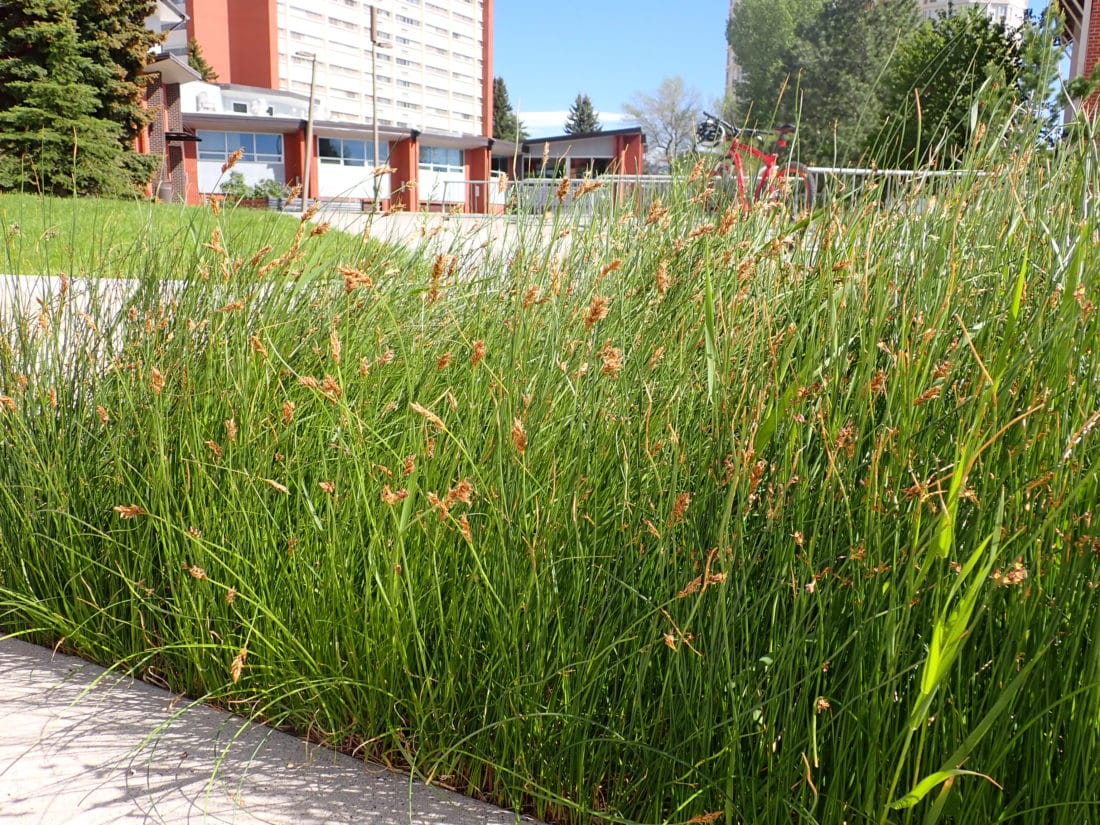Sedge lawns are a smart environmental alternative to traditional lawns. While traditional lawns are resource intensive (i.e., mowing, fertilizing, and watering above rainfall levels are typically required), sedge lawns are often less taxing. Undergoing a lawn conversion from turf grass to a native meadow grass, like sedges, will increase biodiversity, help the native ecosystem, and require fewer resources and much less mowing.
Sedges are close botanical cousins of the conventional grasses that make up traditional lawns. But what we consider traditional lawns in the USA are typically monocultures of turf grasses imported from other parts of the world and not native. The native sedges require little or no mowing, fertilizing, or chemicals. Some also require less water than conventional turf grasses or are more tolerant of moist conditions or shade if dealing with a wet area.
Pick Your Sedge Based on Your Location
Different sedge varieties thrive in various regions of the US. Growing them can help restore some of the local character that existed with native sod grasses..
If you are interested to learn more, John Greenlee has written a book called Easy Lawns (Brooklyn Botanic Garden All-Region Guide), that talks about sedge lawns. It is a guide to identifying the best lawn for your situation and will show you how to convert it from your existing grass successfully.
He has identified five sedges that show promise as substitutes for traditional lawn grasses in many areas.

Five Native Sedges to Consider for a Sedge Lawn Conversion:
Catlin sedge (Carex texensis) – A pretty and soft meadow grass
Carex texensis is a native perennial grass found in various regions of North America. Catlin sedge is a popular choice in landscaping due to its ornamental grass appearance, featuring slender, arching leaves that sway gracefully in the breeze. Catlin sedge is adaptable and thrives in a range of soil conditions. Its compact size and fine texture make it ideal for edging, ground cover, or as an accent plant, adding a touch of elegance to outdoor spaces. This sedge is particularly appreciated for its low-maintenance nature and ability to create a soft, natural look in garden designs.
Texas Hill Country sedge (Carex perdentata) for arid lawn conversion
Texas Hill Country sedge, scientifically known as Carex perdentata, is a native perennial grass-like plant commonly found in rocky soils and limestone terrains. (Most particularly in – you guessed it – the Texas Hill Country). This sedge species is prized for its adaptability to arid conditions. It is a valuable addition to xeriscaping and native landscaping projects. Its slender, arching foliage forms dense clumps and provides a graceful, fine-textured contrast in garden designs. Texas Hill Country sedge’s ability to thrive with minimal water requirements and its resilience to heat and drought conditions make it a sustainable choice for gardeners looking to conserve water and promote native plant species. Whether used as a ground cover or a border plant, this sedge contributes to the natural beauty of the Texas Hill Country landscape.

Baltimore sedge (Carex senta) – a Rain garden Option
Baltimore sedge, scientifically known as Carex senta, is a native meadow grass found in various regions of North America, including the eastern United States. This sedge is highly regarded for stabilizing soil, particularly in areas prone to erosion. It has a dense tufted growth habit and a fibrous root system. It is a practical choice for erosion control along streambanks, slopes, and other vulnerable areas.
One of the standout features of Baltimore sedge is its ability to thrive in wet and dry conditions. It is adaptable to various garden settings and is particularly handy as a ground cover or in a rain garden. Its slender, arching leaves provide a delicate, grassy texture that adds visual interest to landscapes.
Pennsylvania sedge (Carex pensylvanica) – a versatile meadow grass
Pennsylvania sedge, scientifically known as Carex pensylvanica, is a charming native perennial plant found in various regions of North America, including the northeastern United States. It’s popular among gardeners and landscape designers for its graceful, fine-textured appearance. This sedge forms dense clumps of slender, arching leaves, creating a soft, lush ground cover.
One of Pennsylvania sedge’s notable qualities is its adaptability to various soil types and moisture conditions. It thrives in sun and shade, making it a versatile addition to gardens and natural landscapes. Its low-maintenance nature and ability to stabilize soil make it valuable for erosion control and woodland gardens. In my experience, it can be challenging to establish in dry shade.
California meadow sedge (Carex pansa) for Drought Tolerant Lawn Conversion
Scientifically known as Carex pansa, California meadow sedge thrives as a native perennial meadow grass in the western coastal regions of North America. (Particularly in California). This versatile and eco-friendly plant is celebrated for contributing to sustainable landscaping and lawn alternatives.
California meadow sedge forms dense, low-growing, evergreen clumps that resemble a lush meadow. Its fine, green foliage creates a visually appealing and resilient ground cover. This sedge is especially appreciated for its drought tolerant. It is an excellent choice for water-efficient landscaping in regions with limited water resources. It reduces the need for frequent mowing and maintenance, making it an eco-conscious option for lawns and meadows.

Where to Buy Native Meadow Grass Sedges
Each of these native sedges has compact growth and good green color. Hybridization of species collected from natural populations is a relatively untapped market with many ongoing developments.
Many of these sedges and even more additional varieties are now commercially available. Often sold as plugs, sedges, and native turf options are now readily available through various nurseries nationwide.
Learn More about Using Sedge Plugs
Additionally, Garden Designer Benjamin Vogt has been experimenting with re-wilding his suburban plot in Nebraska. He has developed a series of courses that will help any homeowner to ‘Re-think Pretty’. (As is the name of his newest book). And create more eco-conscious, climate and wildlife-friendly home gardens.
All of his courses are available online. There is even a very reasonably priced offering called Green Mulching With Sedge Plugs.

Which Sedges are Thriving in My New England Garden?
I have yet to plant a sedge lawn intentionally. When I tried establishing Carex Pennsylvania in the shady and dry woodland garden, it did not survive. I do however have Carex praegracilis growing in the wet meadow areas (naturally and happily). And Bristleleaf Sedge (Carex eburnea) is growing in the shady woodlands and proving to be more than happy with a constant layer of pine needles on it. (The fescue turf lawn can’t say that!).
Since these are thriving and spreading naturally, I use them to start colonies elsewhere.
Your suggestions will drive my HOA nuts! I live in Florida and suffer through drought and scorching sun for long periods in the summer and then the daily rains… I’ve thought of using sedge as a lawn but its considered a weed to be destroyed. If I go sedge my neighbors will suffer. St Augustine grass is the preferred lawn but it’s a glutton for water and victimized by pests. I’ve had no success with it. Recent legislation limits HOA’s from interferring.
On June 30, 2009, Florida Gov. Charlie Crist signed Senate Bill 2080, which allows HOA members to cover their lawns with native grasses without fear of retribution from HOA boards, which often set restrictions on grass species. The move is designed to help Florida residents conserve water.
I’m considering xeriscaping and artificial turf among other options. What would you recommend?
yeah for Florida (and you, Ed)! — so glad you can start to make some smart decisions, HOA be damned. I am not as familiar with what works in florida as others who are local to you should be (I am in New England) — A couple suggestions though — talk to local nurseries, they should be able to help make great suggestions – also perhaps there are Agricultural extension programs that will help homeowners to make good decisions on water wise groud covers that work locally, and finally – consider calling a local designer. All of these should be able to get you on the path towards alternatives that will work in your neck of the woods. Good luck and please let us know how it goes!
On my property in New Castle County, Delaware, USA I have a large patch of sedge. It grows lush, green, and thick despite being mowed weekly in the summer. The area where it grows is so extremely wet during the fall and spring that “normal” lawn grasses drown and brown, yet the sedge has no problem dealing with a dry summer.
The only way to tell it’s a sedge and not a grass is when it is seeding; the blades are so fine that you can’t tell they aren’t grass without comparing them to a grass blade, but the seed heads are distinctively sedge.
I’m trying to propagate the stuff; it probably requires inundation or at least very wet soil during the spring, but it makes a superb lawn in places where turf grasses drown.